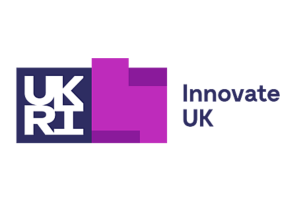Mindset XR Module 5: What standards apply to medical devices?

Welcome to the Mindset Extended Reality (XR) for digital mental health programme learning resources, which include three series: medical regulation, clinical evidence and lived experience involvement. Mindset-XR is helping to catalyse the growth of immersive digital mental health solutions in the UK, through funding, tailored support and training. It is delivered by Innovate UK and the Health Innovation Network South London (HIN).
This series focuses on medical regulation, with key insights from Hardian Health. Across 10 modules, we provide an accessible introduction to people and companies that want to learn more about medical device regulation, with a focus on XR devices. Each module offers a high level overview of a different topic, including medical device regulation in the UK and EU, core medical device standards and overseas regulation. Each module includes additional resources to support your learning and a quiz to test your understanding.
Outline
What are ISO and IEC standards?
The different ISO and IEC standards needed for medical devices.
How to apply ISO and IEC standards
How applying ISO and IEC standards differ between medical devices, software and AI medical devices.
What to avoid when applying ISO and IEC standards
Where to find ISO and IEC standards and things to note.
Multiple choice questions to test your understanding of ISO and IEC standards, in relation to medical devices.
Welcome to Module 5: What standards apply to medical devices? In this section, we're exploring what ISO and IEC standards are, why do medical devices need ISO and IEC standards, which standards apply and where these can be found. Topics include:
What are ISO and IEC standards?
Standards defined by the International Standards Organisation (ISO) and the International Electrotechnical Commission (IEC) are designed to help businesses ensure products and services meet a certain level of quality, safety and effectiveness. ISO and IEC are applicable to every industry, not just healthtech.
ISO and IEC standards are designed to help businesses ensure that their products and services meet a certain level of quality, safety and effectiveness. These standards contain two types of information: normative and informative.
How to apply ISO and IEC standards
ISO and IEC standards are in place to promote consistency. They demonstrate that your organisation has made a commitment to adhere to a level of quality, transparency and accountability to its customers, as well as its stakeholders. Not only this, but conformity with ISO standards can help your organisation improve its processes, making it easier for external parties to work with you as you are all working within the same framework. You also get access to tried and tested methods for best practice in every aspect of business operations, promoting an increase in customer satisfaction and the opportunity to gain a competitive advantage in the marketplace.
ISO and IEC standards benefit everybody, right from industry all the way to consumers. Standardised practice across the board means that healthcare providers and national governments can enjoy the advantage of complying with specifications across different markets. Regulators benefit from the internationally harmonised frequent review of and refinement of these standards as it allows them work within an up-to-date and sound framework that provides a reliable foundation for the development of health legislation.
There are a huge number of standards out there but in this module, we will focus on the key ISO and IEC standards you should know:
What to avoid when applying ISO and IEC standards
All of the standards discussed in this module can be purchased from the British Standards Institution (BSI), but there are some key things to note with these standards. You must not:
- Distribute standards online.
- Reproduce or otherwise share standards.
- Translate or modify standards in any way.
- Sell standards without authorisation.
- Use someone else’s copy - you must buy your own. Auditors will check!
Summary
Medical device standards promote consistency, quality, transparency and accountability within product development and medical devices.
Some standards such as ISO 13485:2016 are mandatory for medical device approvals.
Several of the key medical device standards require formal auditing and certification.
Standards must be purchased and licensed to the manufacturer.
In this module, What standards apply to medical devices?, we explored what ISO and IEC standards are, why medical devices need ISO and IEC standards, which standards apply and where these can be found. After using this resource, you should have a understanding of the following:
Quiz

